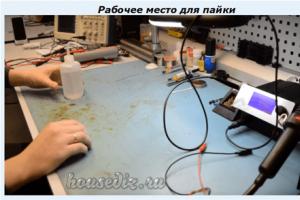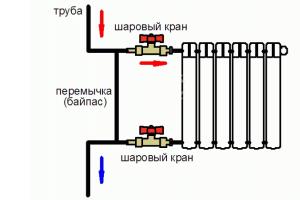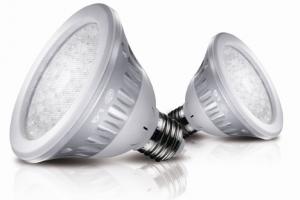In recent years, the construction of private houses has become increasingly popular. Every person who decides to buy their own home inevitably faces a difficult choice.
They are varied in appearance, in the material from which they are built, and in their purpose. By the way, private houses are sometimes also called country houses, citing the fact that they are built either on summer cottages or in country villages. This is not entirely true. In small provincial towns, a lot of low-rise housing is now being built within the city limits, where it is replacing dilapidated houses in the private sector.
There are two options for classifying the types of private houses.
By purpose
By this criterion everything types of private houses are divided into two large groups: houses of permanent residence and cottages, which are used mainly in the warm season.
In turn, permanent homes are also different and differ both in size, layout and amenities.
Cottage

Once upon a time, this was the name for cheap houses that the owners of factories and factories provided for housing for their workers. This was temporary housing for which workers paid rent.
Now, of course, the meaning of the word has changed. As a rule, a cottage is a private house, usually a country house, fully adapted for permanent residence, and equipped with everything that a modern city dweller is accustomed to. In terms of amenities, the cottage is not inferior to a city apartment, but is much larger in area.
Most cottages are one-story or one-and-a-half stories, that is, with an attic. Cottages with two floors are less commonly built. On the ground floor, as a rule, there is a hall and living room, kitchen, dining room and utility rooms. And in the attic or on the second floor there are bedrooms, sometimes a bathroom, but it can also be planned on the first floor.
Like most private houses, the cottage is located on a fairly large plot of land, which can be used for gardening and gardening work, as a place to relax and to accommodate other buildings: garage, bathhouse, gazebo, barn, etc.
This type of private house has one important feature. A cottage is part of a cottage village or area of the city with private buildings. All communications of the cottage are included in the general communication system, which is maintained by a special organization. That is, despite the apparent isolation, the presence of its own plot of land, the cottage is not a completely autonomous building.
Mansion

This is a large urban-type house inhabited by one family. The living quarters in the mansion are spacious and exceed the required standards, often significantly. The mansion has at least two floors, and often three.
Mansions are built according to individual designs. Each mansion is unique, one of a kind, unlike the others.
On the first floor of the mansion, in addition to the hall, living room and dining room, there may also be a library, a billiard room, an office, etc. The bedrooms on the second floor are equipped with individual bathrooms. On the third floor or in the attic there can be guest or children's rooms, studios for doing what you love.
Some modern mansions have their own swimming pools and solariums. In the basement there is a garage, workshops and utility rooms.
The list and variety of premises depends on the interests of the owner of the mansion, his imagination and financial capabilities.
In the garden around the mansion, as a rule, cucumbers and tomatoes are not grown (unless this is the owner’s hobby), but a tennis court or golf course can be equipped. And flowers and other green spaces perform an exclusively decorative function.
But the main difference between a mansion and a cottage is that it can be completely autonomous. For heating there is its own boiler room or, nowadays, more often a gas boiler. Water is supplied from a well, and wastewater flows into a sump.
Ecohouse

This type of private home is relatively new, but has become increasingly popular in recent years. Its main features are environmental friendliness and energy saving. Eco-houses are usually built in an ecologically clean area from natural materials that are safe for health. Most houses of this type are built from wood, and tiles are used as roofing material.
An eco-house is sometimes called a “passive house”, as it has a high level of energy saving due to good thermal insulation of the walls and the use of various alternative energy sources, for example, solar collectors or solar panels.
On a personal plot, not only vegetables and fruits are grown, but also waste is disposed of.
In fact, an eco-house is even more autonomous housing than a mansion.
Country house

A dacha is a country house that is not used for living all year round. Accordingly, there are fewer requirements for its improvement. Moreover, if earlier a dacha was almost exclusively a place for gardening and for growing useful products for the household, now it is more of a place for relaxation and enjoyment of nature.
The peculiarity of country houses is that they are located outside the city limits, and in areas intended for gardening.
Since dachas are used for living in the warm season, they are built from lighter materials, and not as much attention is paid to the thermal insulation of walls as in permanent residences. As a rule, dachas also do not have a heating system. Although there may, for example, be a fireplace, it serves more of a decorative function.
A dacha differs from a permanent home from a legal point of view. If you build a permanent house in a holiday village (on land intended for gardening), then by law it will still not be considered full-fledged housing.
The types of private houses, of course, are not limited to those listed. Sometimes it is difficult to draw the line between a cottage and a mansion, for example. In addition, there are a huge number of old private houses, the so-called private sector. Their characteristics do not fit any of the listed types.
But we are not talking about buying an old house, but about building a new one. And in the matter of construction, an important role is played not only by the functional purpose and appearance, but also by the material from which the house will be built.
Types of private houses, differing in building material
Brick houses.
This is still the most common type of private house, and brick is one of the most traditional materials.
Brick houses are strong and durable; brick buildings can last for centuries. In addition, this material has high fire resistance.
From an architectural point of view, brick is a very beneficial material; it can be used to build a wall of almost any shape, and brick houses, even without unnecessary decorations, have an aesthetic appearance.
But brick is not suitable for building a summer house. You need to live in a house built from it constantly, otherwise without heating in cold weather, the house will become damp, mold will appear on the walls, and the air in it will be like in an old basement.
The disadvantages of brick houses also include the fact that they are relatively expensive, and brick walls require mandatory interior finishing.
Block houses
Currently, there are many varieties of concrete, ceramic, polymer-concrete blocks. Moreover, the materials from which these blocks are made have significant differences in terms of properties and technical characteristics. Therefore, it would be more legitimate to talk about each type of material separately. But block-type houses built from concrete blocks, ceramic blocks, foam concrete or wood concrete (wood-concrete blocks) have common features that distinguish them from buildings made from other materials.
Speed and ease of assembly, since the size of the blocks is significantly larger than the size of bricks.
Light weight. Almost all block-type materials are lightweight, with the exception, of course, of concrete slabs and blocks, which are now quite rarely used for construction. For example, a block of wood concrete - one of the cheapest building materials - measuring 50 × 25 × 30 cm weighs about 24 kg. A block of foam concrete measuring 20 × 30 × 60 cm weighs about 12 kg.
Relatively low price. A cubic meter of foam concrete blocks, for example, is half the price of a cubic meter of bricks. The exception is quite expensive ones. ceramic blocks, which are produced using a rather complex technology and have a number of unique qualities, for example, a high ability to retain heat, which is why they are even called “warm clay”.
High level of thermal insulation. A house built from foam concrete, wood concrete and, especially, from ceramic blocks is much warmer than a brick one.
Moisture absorption. Block-type materials, as a rule, have a porous structure and absorb and evaporate moisture well. Therefore, a house built from them is drier, and its walls “breathe.”
But materials of this type also have disadvantages.
Almost all of them require serious not only internal but also external wall decoration (with the exception of ceramic blocks).
Each type of block has its own specific features that require special knowledge.
Due to their large size, block materials have limitations - they allow you to build houses only with a relatively simple layout and design.
Wooden houses
Wooden construction, which has centuries-old traditions, is becoming increasingly popular and in demand.
Wood is an excellent environmentally friendly material. A wooden house is warm, it has a comfortable microclimate, and with proper use it can serve the owner for a long time.
In addition, a wooden house is beautiful even without additional finishing. Wood is perhaps best suited for a country house; a home made from it fits well into the natural landscape.
But this type of private house also has serious disadvantages.
It takes a long time to build a wooden house, since the finished log house requires at least six months to shrink.
Before use, wood requires special treatment with antiseptic compounds and fire retardants.
Wood is a rather expensive material. And most importantly, a tree takes a long time to grow, and the expansion of wooden construction leads to the fact that forests are destroyed faster than they grow.
Frame-panel houses
This is a relatively new type of private house. They are built from sandwich panels or particle boards with a polymer layer, which are attached to a frame made of wooden beams.
Such houses are easy and quick to install, quite comfortable and economical. But they are less warm and durable than other types of private houses. More precisely, they require extensive work on insulation and waterproofing of walls.
The types of private houses that are currently being built are numerous and varied, and everyone can find the most attractive one that suits their intended purpose, taste and financial capabilities.
- a serious step that determines the way of life of those who settle in it for many years to come. Therefore, you need to approach the matter very thoroughly.
Today, the most common types of new buildings are: panel, monolithic, brick-monolithic and brick houses.
Panel houses
Panel housing construction is well known to us from the era of mass construction in the 70s of the last century. A panel house is built according to the principle of a designer: ready-made parts of the future house are brought to the construction site, from which they “make up” a residential building. The parts of the future house (panels) are made in factories, most often called house-building plants.
This construction technology determines the main difference between panel housing construction and monolithic housing construction: a standard layout. The standard layout assumes a strictly defined number and area of premises in the apartment. One successful version of a panel house is usually copied by thousands, hence the so-called “series” of houses. Houses of the same series are like two drops of water similar to each other. This feature of panel housing construction can be both an advantage and a disadvantage: on the one hand, the buyer in a panel house knows exactly what kind of apartment he is purchasing, on the other hand, such construction presupposes the absence of a free layout.
One of the main problems of panel housing construction is providing thermal insulation. Due to the poor quality of construction, it is often not possible to ensure good thermal insulation of interpanel seams.
Standard panel houses are built faster, since the investor does not need time to develop and approve a new project. For this reason, apartments in panel houses are usually cheaper. Most often, panel development predominates in areas where there is more free territory and where, from an economic point of view, the implementation of housing in a monolith will require much more time.
Monolithic houses
The construction of monolithic houses is a relatively new direction for domestic housing construction. The technology for constructing a “monolith” is fundamentally different from a “panel”. The basic principle of monolithic construction is that the load-bearing skeleton of the building is made of solid concrete. The result is a solid, durable structure without seams.
The undoubted main advantage of “monoliths” is their individuality. Monolithic houses, unlike panel houses, are not divided into series. Each monolithic brick house is designed separately; architects and designers are not tied to specific standard sizes and, as a result, are not limited in making design decisions.
In the “monolith” you can have a free layout, some special configurations, round or square walls. You can make the façade any way you want, so monolithic houses are usually built in especially attractive places. An important feature is that in most rented houses the apartments have only load-bearing walls, and the size and configuration of the premises and how many there will be is decided by the buyer.
Monolithic construction provides a virtually “seamless” structure. Thanks to this, the heat and sound insulation performance increases. In addition, monolithic structures are more durable.
Completely monolithic residential buildings are extremely rare. Usually these are brick-monolithic or panel-monolithic houses. The main difference is in the material of the external walls.
Brick houses
Housing in new brick buildings is of the highest quality and most comfortable, primarily because brick is a material that has been tested for centuries. Brick houses “breathe” better and are much more environmentally friendly, because brick is practically a natural material.
Another thing is that there are currently very few offers for brick construction on the housing construction market. This is due to the fact that brick construction technology requires fairly long construction times and labor-intensive technology. As a result, housing in brick houses is quite expensive and, today, offers for the sale of apartments in new brick buildings are quite rare.
Our company builds only monolithic houses with brick facades. The reliability of the design used has been tested by time of operation and many years of experience in construction. We were one of the first in the Moscow region to begin building monolithic residential buildings and have developed a serious technical and scientific base.
What is a “rough” finish?
Purchasing an apartment in a new building gives its owner considerable advantages. However, many potential buyers of new housing are frightened by the problems associated with the need to furnish it. After all, as a rule, apartments are rented in a “rough” finish. This involves only minimal electrical wiring, installation of heating batteries and windows.
But, as experts note, buying an apartment without finishing also has its advantages. Repairs can be carried out quite quickly, since there is no need to remove old finishing and dismantle communications, and the choice of finishing materials is entirely determined by the preferences of homeowners. In addition, an unfinished apartment costs 30% less than a turnkey apartment.
The last option (turnkey) includes a full range of work on leveling, puttying and finishing walls, floors and ceilings, installing plumbing, engineering systems, doors, etc. Thus, the housing is rented out completely ready for habitation. In Russia, there are very few developer companies involved in the construction of urban houses with turnkey apartments. It is necessary to understand that municipal housing of economy class is mainly rented with a fine finish.
It is important to know! That the construction of partitions, internal engineering and rough finishing costs the developer from 4500 rubles. per square meter. The owner will spend significantly more, not counting lost time, labor costs and nerves. It is necessary to clearly understand what the developer is offering you and prevent future costs; more often there are proposals without interior walls at all, not to mention decoration, less often with walls, but without decoration and internal engineering.
KHIMKI SMU MOIS-1 LLC offers a unique product in Khimki (no one in Khimki does this): at the construction stage, the client can choose apartments with a design layout or offer their own, which will be approved and officially included in the house project, thereby legalized with all legal nuances. Moreover, we will carry out the redevelopment in compliance with all current standards; all you have to do is accept the work in accordance with the Act. Thus, you will save not only money (from a quarter to a million depending on the apartment), but also a lot of time on processing the redevelopment. As a result, you will get the apartment you dreamed of, with ready-made partitions, internal engineering and finishing.
The shape of the house is not just the geometry of the walls of the building, but also the types of roofs, the shape of openings, the porch, the canopy above it and much more, which has a direct impact on the entire external ensemble of the house. Not only the aesthetics of your home, but also, as many astrologers say, the well-being of your household and the harmony in the family depend on the correct choice of the form of construction. But we will skip the subtleties of astrology and focus exclusively on practical advice on choosing the shape of your future home.
Various forms of private houses
Before talking about what shape to choose for an individual building, you need to decide what shape houses generally come in. All houses can roughly be divided into two large groups: houses of simple regular shape and houses of unusual irregular shape.
The first include cubic, rectangular, L-shaped, U-shaped, H-shaped and T-shaped houses. The shape of houses with irregular geometry can be very diverse, and there is a lot of evidence of this in architecture.
Houses of regular geometric shape
Cube houses
Houses made in the shape of a cube are attractive for their heat-saving ability. Such houses, made in a simple form, heat up easily and cool down slowly due to the small surface area of contact between the walls and the external environment. They are compact and easy to erect. This is where their advantages end.
 Cube house project
Cube house project Among the disadvantages, it is worth noting that such private buildings are very difficult to comfortably plan inside. The design of such houses often contains adjacent rooms, which causes some inconvenience in the life of its inhabitants. It is difficult to fit into the design of such houses a place for other utility rooms (boiler room, laundry room, etc.). That is why cubic houses are not often built as permanent housing, but they can often be found among country houses.
Rectangular houses
Rectangular houses are the most popular buildings.
 Rectangular house design
Rectangular house design The design of such houses easily accommodates many isolated rooms, as well as an area for equipping utility rooms. In addition, in rectangular buildings, you can divide the home into “quiet” and “noisy” parts of the house.
The rectangular shape allows you to build a multi-level house with a high base and attic or a house with several full floors.
Easily accommodates. Everyone loves the rectangular shape of the house, but there is one “but”. Such houses are not very compact, especially if they are built on one floor, and therefore they require a large area for construction. In this case, the area should be level and proportionally symmetrical.
Read also
Projects of a two-story house with a balcony
P-G T- and H-shaped houses
U-, H-, T- and L-shaped houses are most often intended to house either one large family or several families of different generations. This form of houses allows you to equip an individual entrance for each family, provide each of them with their own personal space, and at the same time there is still the opportunity to equip a place for spending time together.
There are many advantages to such houses:

Among the houses built in the correct geometric shape, there are also triangular, cruciform, and round houses, but they are not in great honor among architects and builders, since it is quite difficult to create a design for the interior of such houses.
Irregular shaped houses
Often the construction of houses of irregular shape is dictated by the shape of the site on which the building is located. In order for a house on an irregularly shaped plot to look organic, it often becomes necessary to duplicate the shape of the plot in the architecture of the building.
 Irregular shaped house design option
Irregular shaped house design option This is a difficult architectural solution, which always requires an exclusively individual approach in each particular case. The design of such houses is complex.
However, the owners of houses with unusual shapes do not always pursue practical goals; often they simply want to make their building stand out among the many identical buildings around. Indeed, beautiful private buildings of irregular shape always attract attention. And the beautiful landscape solutions of the local area make such houses truly unique.
The irregular shape of a house is not always achieved by distorting the geometry of the walls. Often, to achieve the goal, it is enough just to make a roof of an original shape.
If you pay attention to the developing city and suburbs, you will notice the active construction of multi-storey residential buildings, private cottages, shopping centers, and business centers. Construction is taking place throughout Moscow and the region, but the houses being built vary in type and type of construction. It all depends on the needs and capabilities of the developer, the purpose of the property and other important factors.
The construction of a residential building is quite a significant event for any person. After all, a home is not just a shelter and a roof over your head, it is a unique, special and exclusively individual world for its inhabitants. Therefore, before building their own home, each person carefully considers, first of all, what his home will be like, and in accordance with all the preferences of the developer, an individual design of future housing is drawn up.
The types of house construction are different, as are the modern technologies used to build them. The building can be small, large, or just a huge mansion. In addition, its appearance can be no less diverse. Some people want to get a two- or three-story cottage, others a one-story one, with or without an attic, a simple classical form or an individual design. Our company can build any type of house on a turnkey basis according to the customer’s project or developed by us.
 One of the important criteria when building houses is the choice of its type. First you need to decide on the type of material from which the structure will be built. In the modern world, the choice of types of building materials for walls is quite large. The house can be:
One of the important criteria when building houses is the choice of its type. First you need to decide on the type of material from which the structure will be built. In the modern world, the choice of types of building materials for walls is quite large. The house can be:
- brick;
- from foam blocks;
- from aerated concrete blocks;
- frame;
- from sandwich panels;
- from a log house;
- from timber.
Depending on what type of material will be used to build the walls, the appropriate type of foundation is selected, which is the most important detail in the construction of any building. The strength and durability of the entire structure will depend on a correctly selected, as well as correctly and efficiently constructed foundation.
The following types of foundation exist:
- pile;
Finally, the material for the roof is selected, the choice of which is also quite wide.
The most widespread, in recent times, has been the construction of country houses and country cottages. Most city dwellers want to appreciate the advantages of country houses not only to spend holidays and weekends there, taking a break from the bustle of the city, but also for permanent residence.
Today our company can offer many types and options to suit any financial capabilities and tastes. The cost depends on many criteria, but it is the first factor that makes you want to order the construction of a country house. After all, the price of this type of work in the suburbs is an order of magnitude lower than the cost of an apartment in Moscow. In addition, a country cottage also means comfort, coziness, silence and fresh air.
We carry out luxury construction of cottages according to individual layouts, with a fireplace, spacious terraces, bright attics and large rooms. If the developer has a limited budget, he may be offered construction according to standard projects, which has everything necessary for recreation and life.
Those who decide to order the construction of a house do not have to worry that it will take a lot of effort and time. Our company uses modern materials and technologies to reduce the cost of housing construction and speed up its stages. The list of types of work performed has been expanded as much as possible. Architects and designers constantly monitor the latest trends and implementations in this field.
For many, options for building houses using old technologies are acceptable, which to this day look presentable due to the large size of the living space. But in the modern world, conditions of energy instability prevail, so the design and construction of energy-saving options for houses is becoming increasingly relevant. In addition, only environmentally friendly types of materials are used, which ensures a favorable and healthy microclimate in the house.
Options and types of building houses using modern technologies have a very important feature - the ability to carry out construction and repair work at any time of the year. There is no need to wait for suitable weather conditions; work can be carried out all year round.
During the existence of multi-apartment construction, a wide variety of types of residential buildings were designed and built. The names of some types of residential buildings were included in their official names, while other houses received “folk”, firmly rooted nicknames. At the same time, each type of residential building has specific characteristics, which will be discussed in this article.
Types of residential buildings - Block house
From the name, in principle, it should be clear that such a house is assembled from blocks. This series is assembled from concrete blocks. True, block houses are often confused with another type - panel houses. Of course, they have common points. The walls of panel buildings are also made of concrete. But there is a fundamental difference. Block houses resemble a construction set, as they are made up of several blocks. And the panels are something like a single whole.
Block houses have their disadvantages. The most important of them is the extremely low quality of the plaster. To this you can also add uneven ceilings, on which the whitewash regularly cracks, exposing the seams between the slabs. Block houses are also distinguished by “paired” window frames.
But one of the advantages is the possibility of easy redevelopment. In block dwellings, you can easily demolish interior ceilings, create a shared bath and toilet, and expand doors and window openings.
"Brezhnevka"
These houses were designed back in 1964 and were built until 1980. At this time, the country was ruled by the General Secretary of the CPSU Central Committee, Leonid Ilyich Brezhnev. It was his name that the people christened these types of residential buildings. Moreover, there was nothing new in this; before Brezhnev, such construction was called “Khrushchev”. Again, by the name of the leader of the state.
"Brezhnevki" differed favorably from their predecessors by the presence of a garbage chute and elevators. And the average height of apartments was 2.65 meters. At that time it was a real “luxury”. But the main disadvantage is poor thermal insulation.
Individual

Individual types of residential buildings is the most popular today. Many people want to build a brick house according to an individual project. Moreover, there are no restrictions regarding such buildings. You can build whatever the client wants. There is room for fantasy to unfold.
Brick houses are distinguished by warmth, comfort and visual appeal. All houses, as a rule, have modern double-glazed windows installed, this has an even better effect on heat and sound insulation. Well, the disadvantages include, first of all, the high cost of such buildings. Moreover, the price of a house depends not only on the materials from which it is built. The final cost also includes the location, environmental conditions around, proximity to a river, and so on.
Brick-monolithic

Brick-monolithic types of residential buildings no less popular than brick ones. And in some regions it is the most common. Its structure consists of a monolithic concrete frame, and the external walls are finished with brick. This, naturally, somewhat reduces the cost of the house.
Such structures are characterized by increased strength and reliability. The pile foundation can withstand earthquakes and floods. The appearance may deteriorate, but overall the house will not be damaged.
In fact, a brick-monolithic house is a single structure. And what’s interesting is that the load-bearing walls are the internal partitions. Therefore, it will definitely not fold under external influence. The level of heat and noise insulation in such buildings is one third better than, for example, only monolithic analogues. And the period during which the house will definitely stand without significant repairs is defined by manufacturers as 100 years.
Monolith

Types of residential buildings monolith That’s why they are called that because they are made entirely of concrete. Specifically, it happens like this: building materials are brought to the site of the future house, then formwork is made and concrete is poured. Obvious advantages include the absence of seams on the walls. Consequently, such a house has excellent heat and sound insulation. Plus, a special insulation material is added to the walls.
By the way, the walls and ceilings of a monolithic house are even thinner than those of a brick house. And all this without loss of quality. Plus, the less concrete you need to use, the cheaper the construction.
There is a common misconception that a monolithic house is not very good for the health of those living in it. Again due to the seamless walls. Allegedly, the walls “don’t breathe.” This is not entirely true. Modern monolithic houses are made from the best materials. Moreover, the basis of such a structure is the same reinforced concrete that was used 10 and 15 years ago for panel houses. But today it is a higher quality building material. And if someone cares so much about the environment and health, then they should only live in wooden houses. From this point of view, they are the best.
Panel

Panel types of residential buildings conditionally divided into three categories. As a rule, they are divided by total footage. For example, there are houses of the so-called “137 series”. By the way, these are very good “panels”. These buildings have fairly spacious apartments. The maximum area is 70 square meters (including a 9-meter kitchen).
Cheaper and worse houses are “six hundredth series panels”. This is the so-called middle class. The square footage of apartments in such buildings is no more than 65 square meters, and the area of a standard kitchen is only 7 square meters.
And finally, the cheapest option is “504 series” panel houses. By the way, they are also called “ships”. The kitchen in such houses is only 6.3 square meters; it is very difficult for even two people to fit in it. Other obvious disadvantages include the lack of window sills and high windows.
"Stalinka"

More than half a century has passed, and "Stalin's houses" still belong to the category of elite types of residential buildings. Accommodation in famous towers is expensive, but very comfortable and prestigious. Huge footage, spacious rooms, convenient entrances and beautiful appearance. And how high the ceilings are in such houses. In addition to the interior decoration, these apartments are also located in very advantageous locations. As a rule, this is the city center.
Meanwhile, “Stalin” buildings are divided into two categories depending on what materials they were built from – brick or cinder blocks. The first material is an earlier stage in the history of Stalinist guns. They began to build houses from cinder blocks later, when, in fact, this material appeared. They have, of course, become cheaper. But brick has always been valued for its excellent sound insulation qualities. Plus, the brick “Stalinist houses” looked more attractive.
Unfortunately, the construction of such comfortable housing was stopped in 1956. Although the motives at that time were quite clear. The construction industry converted to Khrushchev-era buildings because they were cheaper and quicker to build, meaning more people could be accommodated in one house.
"Khrushchevka"

"Khrushchev"- these are standard five-story buildings that can be found in any city in Russia today. Even Moscow has not yet completely gotten rid of them, although the demolition program has existed for a long time and is slowly being implemented.
“Khrushchevka” continues the tradition of calling types of residential buildings named after the head of state. From the name it should be clear that they were built at a time when Nikita Khrushchev was in power. And this is the period 1956-1964. True, with the change of leader, the construction of the houses he named did not stop. For example, in the Moscow region such buildings appeared until 1972. And in distant regions of the country they were built until the mid-80s. And all because they were very cheap and quickly erected. This means that the problem of providing housing for citizens was resolved more quickly. But the price of such speed is the internal discomfort of the apartments. They are all small - the kitchen area is 6 square meters, the ceilings are 2.5 meters high.
Moreover, if at the dawn of the “Khrushchev” they were built from brick, then later they switched to panels. And this immediately affected the quality. For example, the ability to retain heat has dropped sharply. The Khrushchev buildings are hot in summer and cold in winter. Significant disadvantages also include the lack of an elevator, a combined toilet and bath, and no attic or garbage disposal. There is only one positive point - “Khrushchev” buildings are inexpensive. And, as a rule, they are located next to metro stations or in close proximity to them.
These are, perhaps, all the types of residential buildings that I wanted to write about. In conclusion, it is worth noting that each type of residential building is divided into project series, about which read a separate section of the site.








